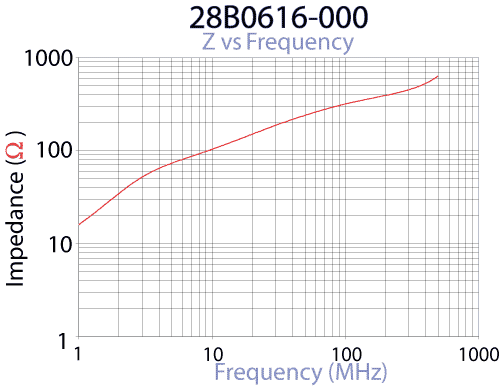Not clear how your choke balun is configured?
The choke balun does not make impedance transformation as regular 300:75 Ohm baluns would.
For example; two 300-Ohm antennas paralleled would provide about 150 Ohms impedance at the junction. Then a 150:75 Ohm transformation is needed. Then the ferrite choke balun could be applied.
Another example; The twin lead from four 300 Ohm identical antennas could be be paralleled to provide about 75 Ohms impedance, then the ferrite choke balun applied.
As you know, UHF is 470-608 MHz. Upper VHF is 174-216 MHz.
Haven't looked at your particular ferrites. It is best to select for maximum impedance at the frequencies of interest.
For UHF, In future you might want take a look at Laird (PN 28B0616-000), it is solid and fits over regular RG6 (not quad), provides more than 500 Ohms impedance at 500 MHz. It has fairly high impedance at upper VHF as well. Maybe the Fair-Rites you have are similar, one could compare graphs.

The Laird ferrites are available at DigiKey. Think Mouser has them also. Laird also has some other sizes that are convenient, such as to fit over Connectors, etc.
Unless you have some very strong local interfering next to, or very close to the coax, the quad shield version is not helpful. Quad shield does not have any advantage with respect to attenuation, it is stiffer to work with, and usually requires a different connector than regular coax.
The main reason for the twist is to help reject pickup of strong signals by the twinlead.
Optimal twist depends on frequencies to be rejected. It is usually not critical.
TV & radio signals travel thru space as electromagnetic waves, like light.
The speed of light is about 300 million meters per second.
The frequency is in Hertz, that's cycles per second (cycles being wavelengths).
The length of a wavelength is the distance traveled in one second, divided by the number of cycles in one second.
For example:
At 535 MHz, that’s 535 million cycles per second, that’s also 535 million wavelengths per second.
Divide 300 million meters per second by 535 million cycles per second
The ‘per seconds’ apply to both numerator and denominator so they cancel.
The ‘million’ apply to both numerator and denominator, so they cancel.
That leaves meters as the units.
300/535=0.56 meters
There are 39.37 inches per meter.
0.56 meters ~= 22 inches
One fourth of 22 inches ~ = 5.5 inches
There are two numbers to remember; Speed of light and number of inches in a meter.
It is not necessary to apply a velocity factor.
Since signal of interest is traveling on the coax shield, then conductor is outside the coaxial cable and the signal travels at nearly the speed of light.
If inside a coaxial cable, the velocity of propagation slows. The slowed signal can travel at speeds in the range of about 66% to maybe 85% for common coax. For twinlead the slowing effect is less pronounced, maybe in the range of 80-95%.
Because the ferrites are an inch or more in length, that occupies a significant portion of a wavelength at UHF, so the precise location of a quarter wavelength is not critical.
For upper VHF, multiply the above number by 3 might be close enough, or recalculate to get about; 15 inches for quarter wavelength.
Or,
Plug frequencies in to this (or other) online wavelength calculator:
http://www.procato.com/calculator-wavelength-frequency/
.